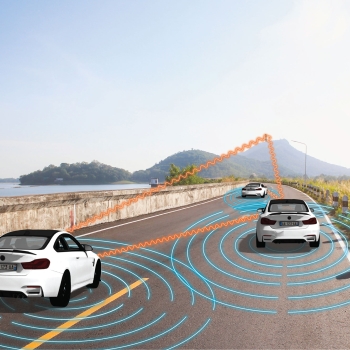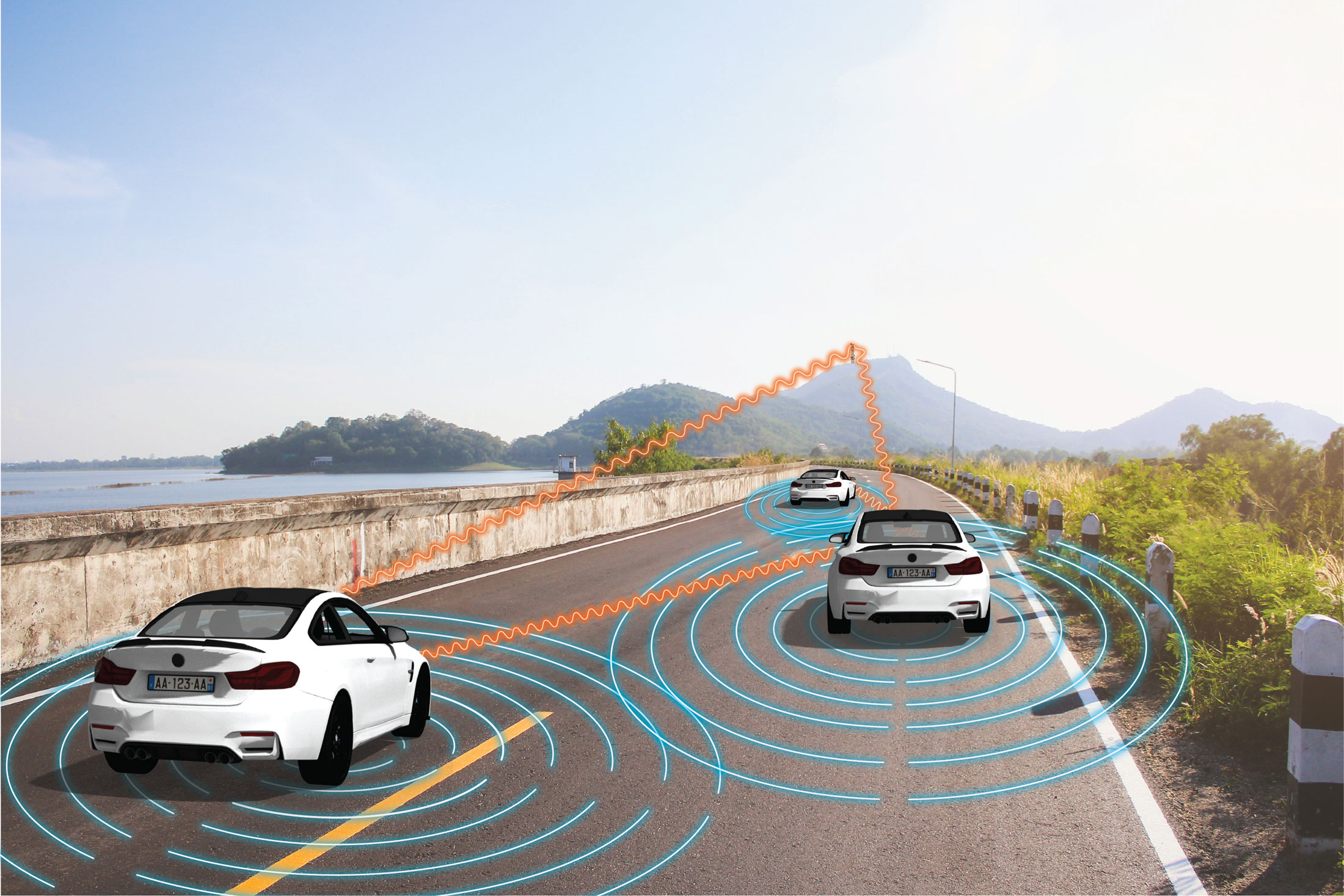Constrained Communications and Radar Dual-Use (CONCORD)

MIT Lincoln Laboratory is developing waveforms that can be used to simultaneously transmit and receive data while also being used as radar waveforms to detect and track moving objects. The technique allows the development of an alphabet of waveforms that fulfills a set of desired performance goals for the radar system and can also be used to code data into a communications data stream. The communications alphabet can be designed so that data are transmitted and received at close to the theoretical upper limit for data communications (as defined by the specified radar performance constraints).

The CONCORD waveforms allow sensing and communications to be performed simultaneously with the same transmitter and receiver, thus accomplishing both missions without time sharing. This capability provides efficient use of the radio-frequency spectrum, a shared resource that is increasingly crowded because of the proliferation of wireless technology. Similar techniques used worldwide offer neither the radar performance nor the communications throughput of the Lincoln Laboratory technique, and cannot match CONCORD's upper data communications limit. This technology has been field tested at Lincoln Laboratory. Good communications and radar performance were achieved with a proof-of-concept setup in which the raw radar and communications data are recorded and subsequently processed on a separate system. The computations necessary for real-time operation have been quantified and are achievable with today's standard portable computational hardware.
Applications
Telecommunication-Provided Optimized Passive Radar Service
A passive radar detects objects by sensing their reflection of ambient wireless transmissions, such as cell phone or broadcast television transmissions. With CONCORD, a transmitter has a robust and well-optimized trade-off space between communications throughput and radar performance. The waveforms could enable flexible telecommunication infrastructure that improves passive radar detection without impeding traditional telecommunication. Cell towers could act as on-demand bistatic radar transmitters that enhance autonomous vehicles' radar performance and streamline their hardware. CONCORD offers the same benefits for air traffic control, a field that could use passive radar to free up radar-allocated frequency bands in an increasingly crowded radio spectrum.
Network-Enabled Ground and Self-Driving Vehicles
Many sensing vehicles use onboard radar to provide drivers with real-time situational awareness and to enable smart cruise control and other safety features. These vehicles also allow off-board, real-time communications for various purposes, mainly entertainment. In the future, vehicles might communicate various dynamic parameters, such as imminent acceleration or deceleration, to nearby vehicles. This capability enables "smart" highways in which vehicles form ad hoc networks to allow, for example, piloting of multiple vehicles by a single lead vehicle and other cooperative techniques to enhance traffic flow and safety.
Benefits
- Uses sophisticated, computationally efficient techniques to allow object sensing and tracking
- Efficiently carries data transmitted off platform at the near-theoretical data-rate limit
- Uses same hardware to sense objects and simultaneously communicate with other platforms
Additional Resources
U.S. Patent 11,181,630
I. Weiner, "High-Throughput Communications Modulated Over Radar Transmit Waveforms," Proceedings of the IEEE Radar Conference, Apr. 2019.
2022 R&D 100 Award winner